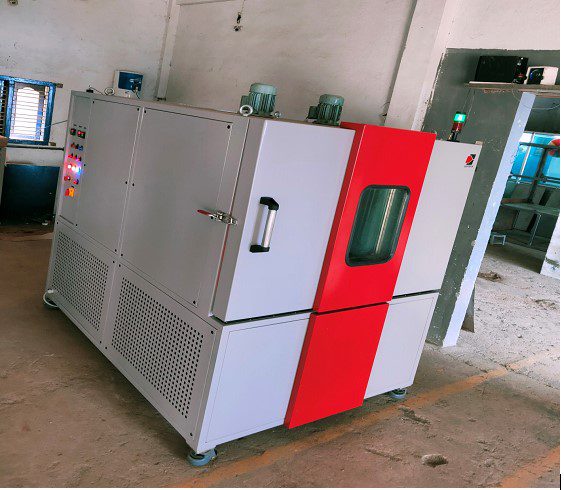Testing products in their actual environment provides significant feedback as to how they will work in real-Global conditions in all extreme weathers.
A Climatic /Environmental chamber delivers this feedback by exposing the material inside to stress such as vibration, sun exposure, extreme temperatures, extreme humidity / moisture, and many more.
Will the product stand up to these conditions, or will it disintegrate sooner than expected? The Climatic /Environmental test chamber can:
⦁ Help evaluate product quality and reliability, and identify manufacturing flaws and weaknesses
⦁ Show the process of product decay and degradation and help predict its potential lifespan
⦁ Assess how materials—including biological, industrial, and electronics—react to selected conditions

While there are various types of environmental chambers on the market, some include the Constant Climate Chamber, Temperature and Humidity test chamber, Controlled Environment Chambers , Bench top Humidity chambers, and climatic simulation and Photo Stability test chambers. Consider all the ways you will need to test your product or material before making your selection.
Environmental chambers allow manufacturers to stress their products in a single environment.
An environmental chamber allows testing the product in both a continental type climate, with cold winters and hot summers, and a Mediterranean climate with higher temperatures.
Environmental chambers, if properly calibrated, generate reliable results that simulate the performances of the product in its real life cycle.

The conditions an environmental test chamber is able to replicate are: temperature set-point (or variations), moisture in the form of relative humidity or rain, electromagnetic radiation, sunlight exposure/UV degradation. The type of testing involved will determine the chamber type; chambers come in a variety of sizes and are designed with different functionality and options.
Floor-mounted and bench-top chambers are the most widely used. While most chambers are made from steel, the materials used for their inner and outer walls vary according to application. The chambers’ intended applications will also affect the type of heaters, coolers, condensers, evaporators, controllers, sensors and other modules used. Test chambers have evolved to keep pace with developments in product testing requirements, such as those for biological and military applications. These chambers are often customized to meet all required environmental testing requirements, and devices used for measurement are highly accurate and reliable.
Compared to their predecessors, designs have smaller footprints, and are easier to operate. Their user interfaces are similar to touch-screen Windows displays, as opposed to the legacy scroll electronics. If they are web-enabled, they can be programmed and operated online.
We deal with
Environmental Simulation Products
BOD Incubator
Cold Chamber
De Humidifier
Deep Freezers
Dust Chambers
Growth Chambers
Hot and Cold Chambers
Hot air Oven Chambers
Humidity Chambers
Reach in Growth Chambers
Salt Spray Chambers
Solar Chambers
Stability Chambers
Thermal Shock Chambers
Tray Dryer
Walk-in Cold Chambers
Walk-In Environmental Chambers
Walk-In Hot and Cold Chamber
Water Heated Jacket Oven



Leave a Reply